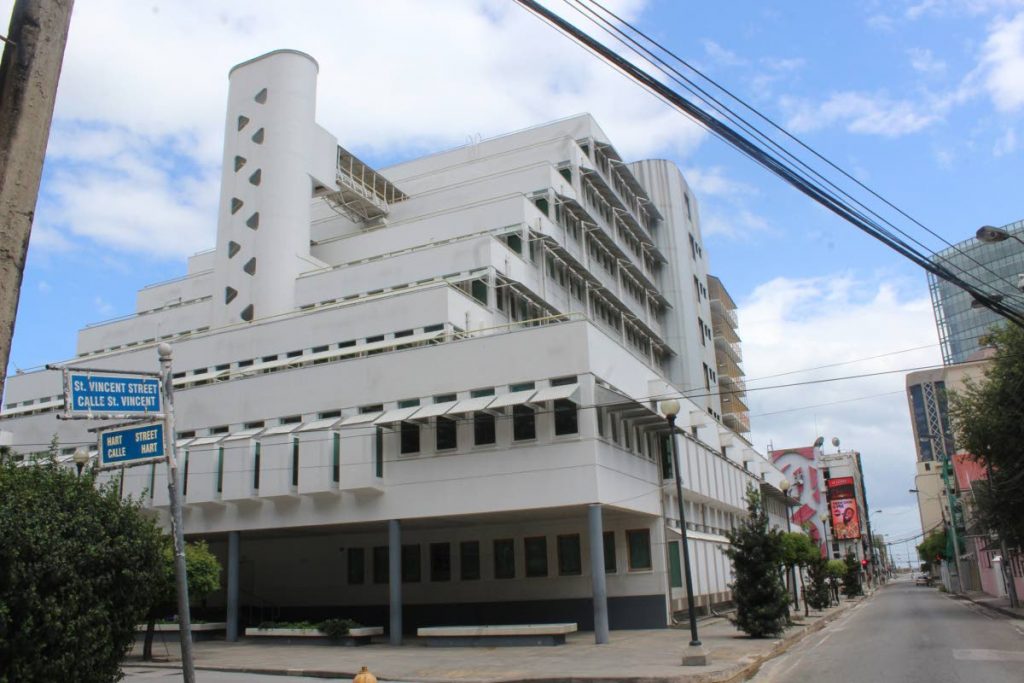Death of a master

BORN in England in 1924, Colin Laird, who died last week, first came to Trinidad as a serviceman during World War II. He returned for good in 1952 after training as an architect (among other projects, he worked on Britain’s National Theatre).
Laird worked on some of the first versions of the Little Carib Theatre, Woodbrook, as well as being one of the backing musicians there and supporting the theatre in other ways in its early years.
He designed and restored many other buildings in numerous locations in Trinidad and Tobago as well as other Caribbean countries.
But above all else he changed the face of Port of Spain as much in the 20th century as the Scots architect George Brown did before him in the 19th. Laird designed, inter alia, Queen’s Hall, the National Stadium, the Brian Lara Promenade and the National Library.

He received a national award, the Chaconia Medal (Gold) in 2001.
In 2003, shortly after the library opened, Judy Raymond wrote this piece, Lure of the National Library, which not only describes that building but sums up Laird’s skills and his impact on the landscape of the entire city.
The real problem with the National Library is that it’s been too successful. There’s been endless old-fogeyish harrumphing about how dreadful it is that so many young people gather there in the afternoons.
But the chances are that if they get tired of idling about outside, one or two of them may actually stumble upon the pleasures to be found in books, which they couldn’t and wouldn’t learn if they were only forcibly herded into the library on class outings.
What the critics haven’t realised, too, is that it’s not just their hormones or the computers or the excuse of going to study that draws the young people there. Everyone’s been so busy disapproving of these gatherings that no one has realised that they were part of the plan.
But that too is probably deliberate on the part of the library’s wily old architect, Colin Laird. It’s a mark not only of our inattentiveness to our surroundings but also of its success that there has been next to no comment about the building itself. In fact the sole description I’ve seen of it in print is a snide, throwaway dismissal of it as a failed experiment in galvanise.
Well, it’s galvanise at its most elegant: panels of corrugated metal sheeting with a modern, brushed-steel sheen, and window awnings that echo, with affection and respect, the pitched roofs of every house in Belmont and Laventille. It’s a building with a sense of place, and another important but even scarcer quality: a sense of humour.
The library is grand where it needs to be, on the side facing the Red House and Woodford Square, where the black-painted hi-tech workings of the panoramic lifts are displayed against the white façade, soaring above the roof of the Old Fire Station. But otherwise it doesn’t call attention to itself. Given its place and its size, it has no need to trumpet its importance. It’s just an unobtrusive white shape, light as a cloud.
Apart from the visual pull of its cool airiness, the library building practically begs people to lime there. There are overhangs on the shady sides, the east and the north, offering places to sit out of the sun or, if the rains ever come, a dry spot to shelter. That’s exactly what a public building in this part of the world should do; but can you name another recent building in the city that welcomes visitors and passers-by in that way?
Actually there is one such place, though it’s not a building, and it too was designed by Laird: the Lara Promenade, another people-friendly triumph that was instantly embraced by the city as if it had always been there. The promenade too made a huge yet oddly overlooked difference to the landscape and the ambience of Port of Spain; it’s as important as the Savannah.
The genius of Laird’s public architecture is that it gives people something they didn’t even realise they were missing.
But Laird, of course, knew what he was about. Writing about it a few months ago, while it was still shut off behind a galvanise fence, I suggested: “The library may well have the same impact (as the promenade). It certainly won’t be an ivory tower: Laird hopes there’ll be musical performances every lunchtime in the amphitheatre, and he envisages the young adults’ reading room in the basement as being ‘like a disco.’”
Laird also understood that it didn’t matter whether people were conscious of the effect the building had on them: “If they feel good in a building I know why,” he said then, “even if they don’t.” People get it, just as they instinctively appreciated the promenade and showed their appreciation by flocking there from day one.
But the library hasn’t had its full impact yet. There have been some performances at the amphitheatre. But there are no signs of the sidewalk café for which the Old Fire Station was intended. The idea was to attract a different crowd, and at different times – like after dark, when there’s nothing to do in downtown Port of Spain unless you want to eat chicken and chips or look for a taxi.
This is the real achievement of the library building. Before it opened, the only people who deliberately spent time in the area were the ageing herbalists and philosophers of Woodford Square and the vagrants outside the cathedral and the Red House. What the library has done is to create a sense of the city centre as a place in itself, not just somewhere you pass through on your way to a real place, home or the office.
What’s more, it attracts precisely the people it needs to – the young. If they’re not chased away now, they may go on returning there as adults because it’s what they’ve always done. And in that way they will give back to the heart of the city the lifeblood that has been leaking out of it for decades.


Comments
"Death of a master"